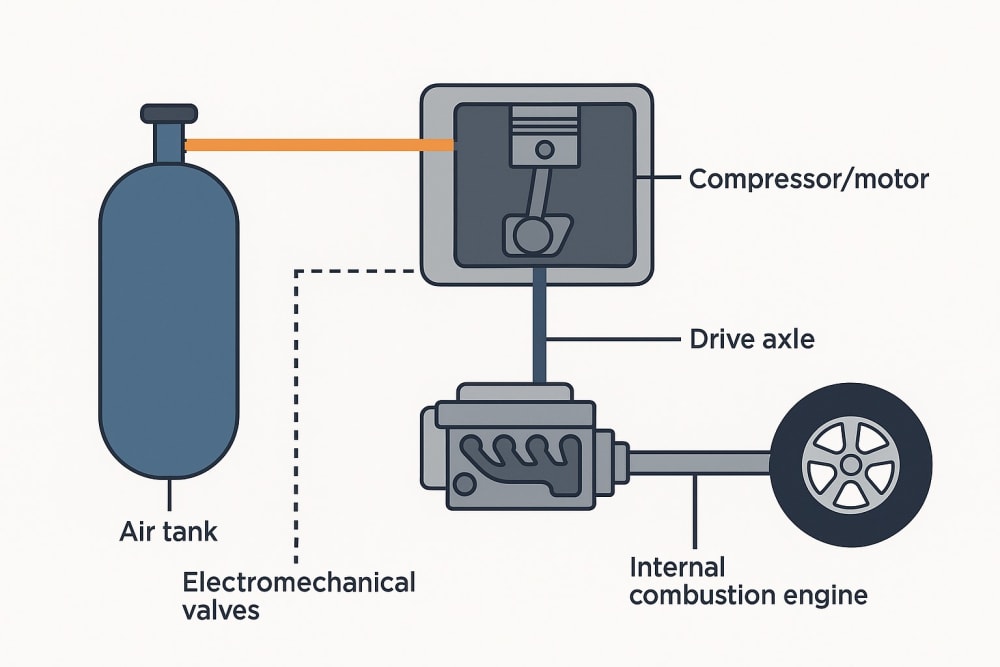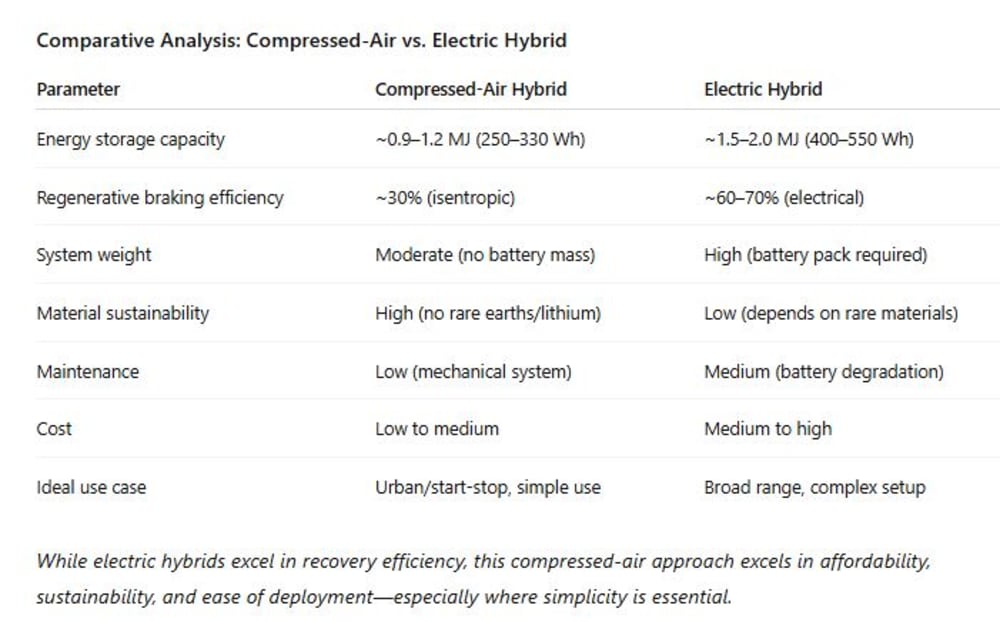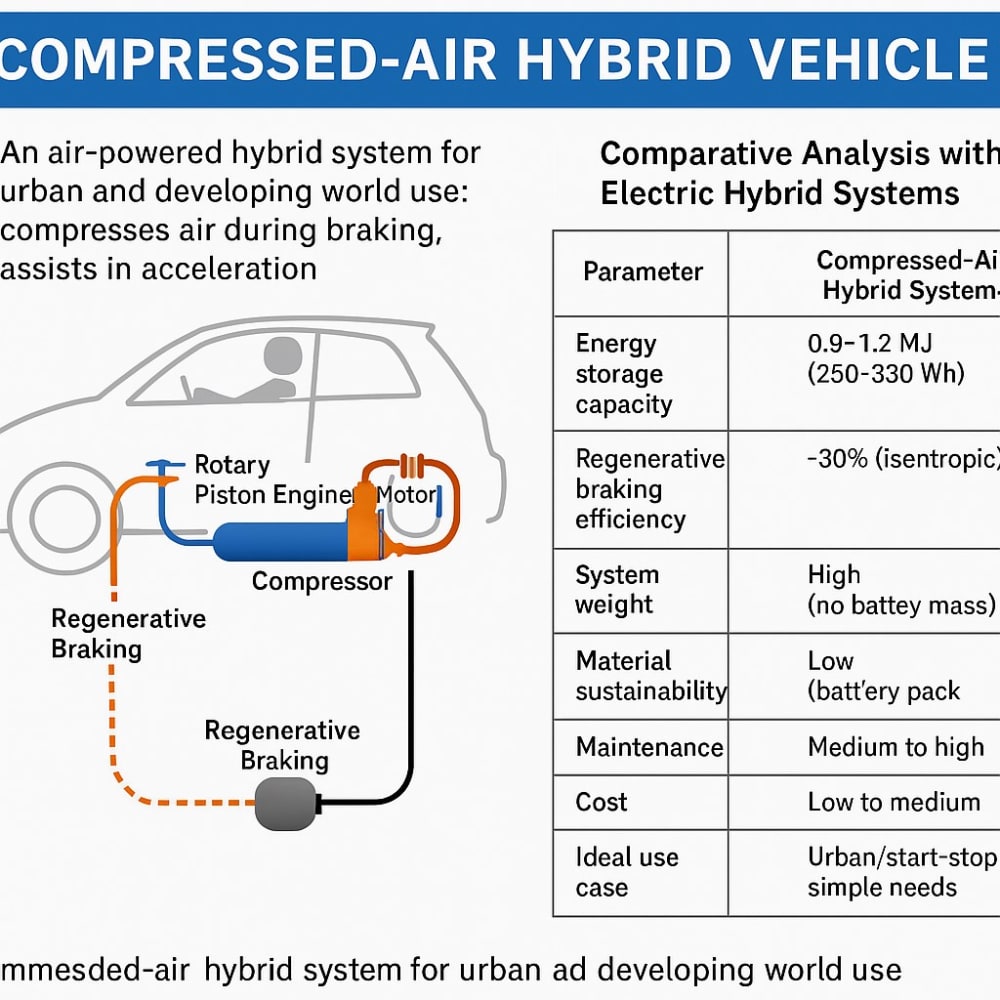Executive Summary:
This proposal introduces a groundbreaking, low-cost, and sustainable alternative to conventional electric hybrid systems. By using compressed air instead of batteries, this regenerative system drastically reduces complexity and environmental impact. A reversible piston unit stores braking energy as compressed air and reuses it to assist vehicle startup. It is a recyclable, battery-free solution suitable for lightweight vehicles and especially valuable in regions with limited access to battery infrastructure.
Technical Description:
- During braking, the vehicle's kinetic energy powers a reversible reciprocating piston compressor, storing air in a tank at pressures up to 8 bar (116 psi).
- During startup or low-speed motion, the same compressor operates in reverse as a pneumatic motor, converting stored air back into mechanical energy.
- System operation is controlled via pressure sensors and electromechanical valves.
- The design avoids the use of lithium, rare earths, or complex electronics.
Estimated Energy Recovery (Based on Calculations):
- A 45-liter air tank at 8 bar stores ~3600 liters (0.36 m³) of air at atmospheric pressure.
- With an isentropic efficiency of ~30%, the usable energy is estimated at 0.9–1.2 MJ (250–330 Wh).
- Sufficient to support vehicle acceleration or power ~0.5–1 km of urban travel at low speeds.
Key Advantages:
- Mechanical Simplicity – No batteries or electronics.
- Low Maintenance – Based on robust mechanical components.
- Environmentally Friendly – No lithium or rare earth material required.
- Low Cost – Ideal for mass production and local assembly.
- Scalable Design – Suitable for small vehicles, scooters, or fleet applications.
- Excellent for Urban Driving – Designed for frequent stop-and-go conditions.
- Empowering Developing Regions – Can be built and maintained locally without reliance on costly battery technology.
- Reduces Emissions Indirectly – Less need for high-energy battery manufacturing.
Potential Applications:
- Lightweight urban vehicles
- Electric tricycles or tuk-tuks
- Last-mile delivery fleets
- Postal, garbage, or municipal service vehicles
- Sustainable vehicles in developing countries
Development Status:
Initial calculations validate the feasibility. Prototypes could be developed using reversible compressors and industrial-grade air tanks already available. Ideal candidates include small hybrid scooters or microcars with regenerative braking systems.
While electric hybrids excel in recovery efficiency, this compressed-air approach excels in affordability, sustainability, and ease of deployment—especially where simplicity is essential.
Conclusion:
This innovation offers a disruptive and accessible path to clean transportation. It circumvents the dependency on complex battery systems and empowers regions that lack advanced electric infrastructure. The compressed-air regenerative hybrid has the potential to democratize hybrid vehicle access and support climate-conscious mobility across diverse markets.
Like this entry?
-
About the Entrant
- Name:David Crispi Sucarrats
- Type of entry:individual
- Software used for this entry:Chat GPT for the calculations
- Patent status:none








